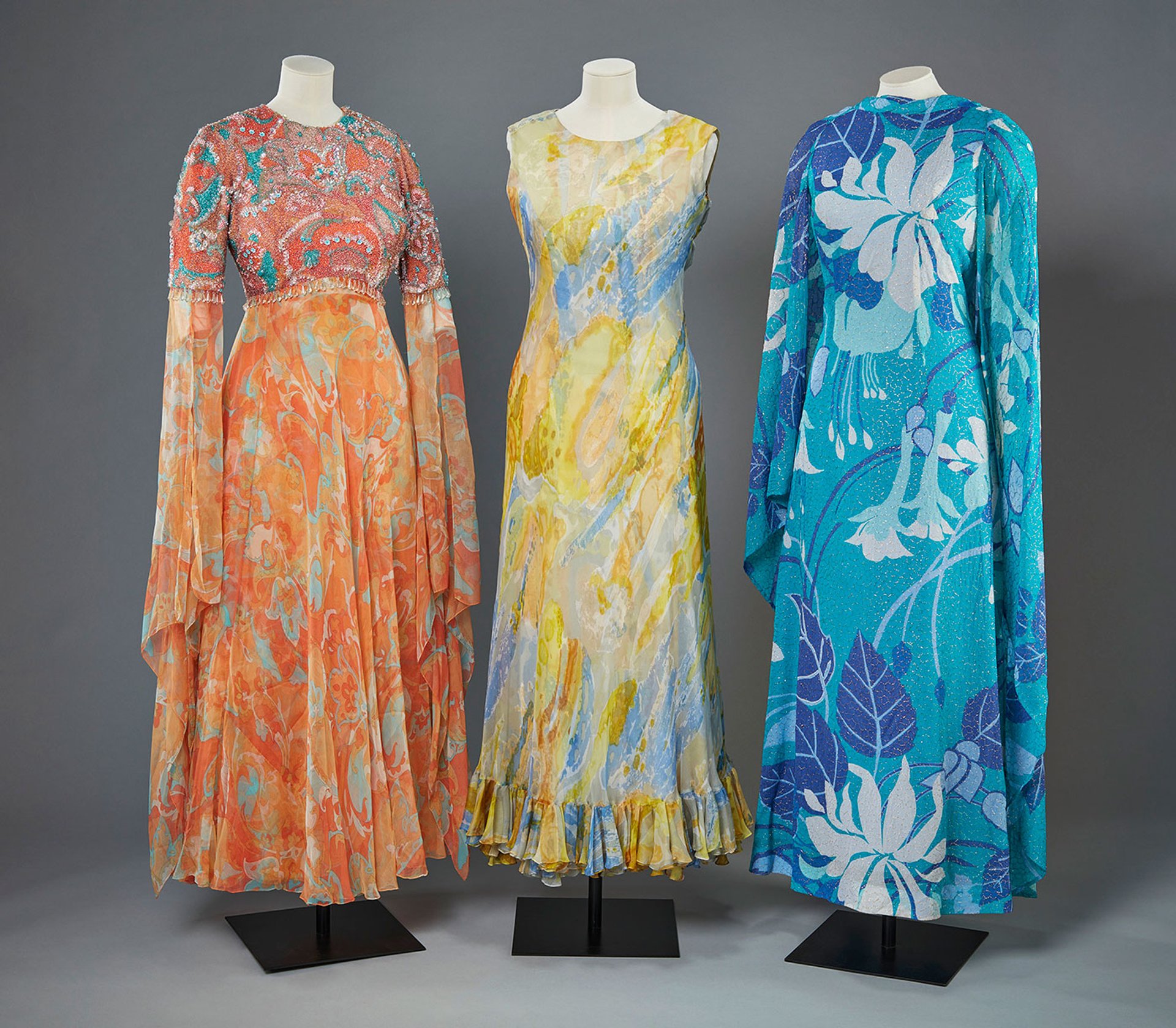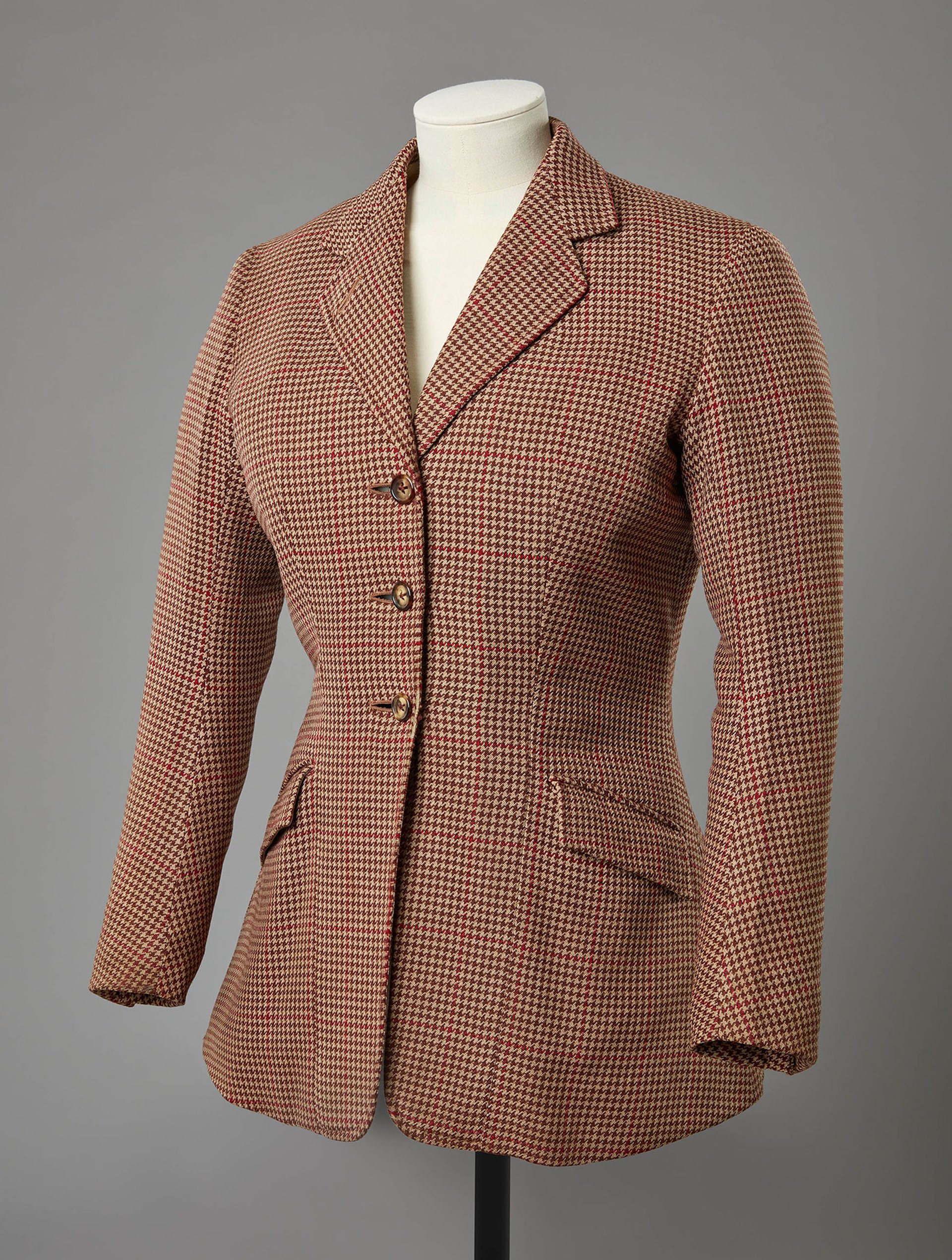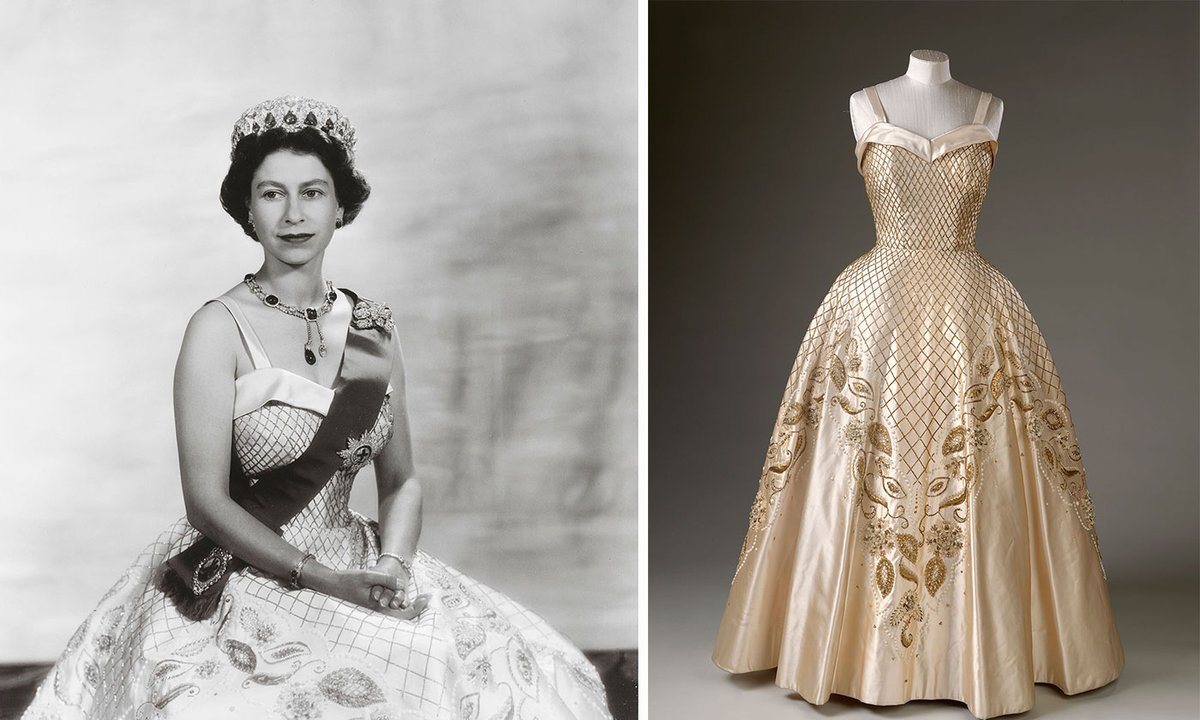The Royal Collection Trust is to put on an exhibition of Queen Elizabeth II’s clothes next year, to mark the centenary of her birth. The show will open at the King’s Gallery at Buckingham Palace in London in spring 2026.
The exhibition, Queen Elizabeth II: Her Life in Style, will include the dresses the late monarch wore at her 1947 wedding and at her coronation in 1953, both of them designed by Norman Hartnell. Elizabeth—like her predecessor Queen Elizabeth I half a millennium before—used the coded language of dress to exercise the soft power of monarchy. Examples in the exhibition of diplomatically significant dress will include a white gown designed by Hartnell for a 1961 state banquet in Karachi, which incorporates the national colours of Pakistan through the device of an emerald-green pleat running down its back.
Coded language: Elizabeth II’s coronation dress (right), by Norman Hartnell, carries embroidery of the Tudor rose, the thistle, the leek and the shamrock, in honour of the United Kingdom of England, Scotland, Wales and Northern Ireland, and of the wattle and the protea to represent Australia and South Africa. Another Hartnell dress, for a state dinner in Karachi in 1961 (left) represents the national colours of Pakistan by including an emerald-green pleat down the back of the gown © Royal Collection Enterprises Limited 2025 | Royal Collection Trust
The Hartnell coronation dress had originally been designed to be embroidered with the Tudor rose, the thistle, the leek and the shamrock, in honour of the United Kingdom of England, Scotland, Wales and Northern Ireland. But, as Jane Mulvagh wrote in The Art Newspaper in 2022 (at the time of Elizabeth’s platinum jubilee): “On seeing the preparatory drawings for the gown by Norman Hartnell… the Queen made a politically crucial addendum. Hartnell had omitted any reference to the Commonwealth and so the four UK flowers came to be garlanded with those of the Commonwealth, including the South African protea and the Australian wattle flower, in acknowledgment of their importance.”
The 200-piece exhibition will include sketches and correspondence with the Queen’s couturiers, as well as clothes from throughout her life. She and her younger sister Princess Margaret had their dress closely analysed in the national press from earliest days. The exhibition will include the bridesmaid’s dress—designed by Edward Molyneux—that the then Princess Elizabeth of York wore at the 1934 wedding of her uncle the Duke of Kent and Princess Marina of Greece. It will also feature examples of the horse-loving monarch’s everyday look, whose staples were tweed twinsets or jodhpurs and a hacking jacket.

Bright colours worn the better to be seen: three evening dresses from around the 1970s by Ian Thomas for the late Queen Elizabeth II © Royal Collection Enterprises Limited 2025 | Royal Collection Trust. Photographer: Jon Stokes
A symbol for the nation
The controlled, carefully evolving global visibility of Elizabeth II in her seven-decade reign turned into what could be seen a demonstration of durational performance art as she assumed the roles of national mother; head of state; emblem of value on currency and postage stamps; a sitter in official portraits; and an adept processional and ceremonial performer.
It was part of the Queen’s duty to be present and to be visible; she had, as she once quipped, to be seen to be believed. In the late 1960s, with the emergence of colour television, she and her couturiers adapted the simplicity of contemporary dress and bright, monochrome, block colours, creating optimal conditions for her to be both filmed and identified. The exhibition will include some of the vibrantly colourful printed dresses made for her by Ian Thomas in the 1970s, which have never previously been exhibited.
At a time of national crisis, in the early weeks of the Covid-19 pandemic, such colour was used as a source of symbolic comfort; when Elizabeth spoke to the UK nation, in April 2020, wearing on her shoulder a turquoise brooch, she represented protection and hope.

Everyday royal style: a hacking jacket, by Weatherill, worn by the horse-loving Elizabeth II © Royal Collection Enterprises Limited 2025 | Royal Collection Trust. Photographer: Jon Stokes
Her chosen couturiers, all of them British, were in succession Hartnell, Hardy Amies, Thomas and Stewart Parvin. Mulvagh wrote in The Art Newspaper of conversations with Amies in which he recounted the stricture of his royal brief which included “the size of a hat brim, limited so that the Queen could be seen by her people; hems weighted to ensure propriety on windy days (her dressing department even included an electric fan used to test-run diaphanous fabrics); dresses rather than skirts so that no rearranging of garments was required as she stepped out of a vehicle; zips rather than buttons to facilitate up to five changes of clothing a day”.
Caroline de Guitaut, the exhibition’s curator and surveyor of The King’s Works of Art, said in a statement: “Over the course of Queen Elizabeth II’s remarkably long reign, her distinctive style became instantly recognisable around the world, bolstering the British fashion industry and influencing generations of designers and couturiers.
“Only now, as the late Queen’s fashion archive comes under the care of Royal Collection Trust, can we tell the story of a lifetime of thoughtful style choices—from her hands-on role and understanding of the soft power behind her clothing, to the exceptional craftsmanship behind each garment.”
- Queen Elizabeth II: Fashion and Style, The King’s Gallery, Buckingham Palace, London, spring to autumn 2026 (dates to be confirmed)
